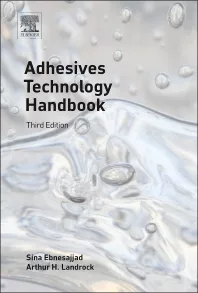Ask Dr. Dave
How do I select the right adhesive or sealant to bond and seal industrial components?
Dave Dunn's February 2018 column.
Question: We have several industrial components to bond and seal. Some of the bonds have quite large gaps, while others are tight-fitting. How do I select the right adhesive or sealant?
Answer: This is a very interesting question. Many adhesives are used in what is called a “zero gap” situation, where the adhesive is applied between two closely fitting surfaces, which are then clamped together. In fact, this is usually the only situation where adhesives that cure by initiation from surfaces can be used, and at large gaps the center of the adhesive will fail to cure. Cyanoacrylate and anaerobic adhesives, while conveniently one-component, have the distinct disadvantage that their polymerizations are initiated from the surface being bonded, and the lack of molecular diffusion as polymerization proceeds prevents curing through large gaps. They are limited to gaps of about 20 mils (0.5 mm), although this can be improved slightly using surface activators.
Many adhesives contain fillers, and a true zero-gap situation can never be achieved. In fact, controlled gaps can be created by adding materials like glass microspheres of known diameter. Where irregular surfaces are involved, a two-component mixable adhesive must be used, such as an epoxy or polyurethane.
In general, thin bondlines tend to give maximum adhesive strength that tails off as thickness is increased because the adhesive strength is greater than the cohesive strength of the adhesive. Bondlines of 5-15 mils (0.1-0.4 mm) tend to give the highest adhesive strengths, although good strengths can be maintained at much larger gaps with some adhesives. Toughened adhesives like reactive acrylics will maintain better strengths at large gaps, compared to rigid adhesives. One-component polyurethanes are unusual in that they react with moisture and generate CO2 gas, which foams and expands the adhesive to fill all gaps.
Sealants are somewhat different to adhesives in that, although good adhesion is required, joint movement capability (JMC) at large gaps is often critical to counter the expansion and contraction of the sealant with changes in temperature. Modern very flexible sealants like silicones and polyurethanes have the highest JMC compared to older technologies like oil-based sealants or solvent acrylics. ASI
Any views or opinions expressed in this column are those of the author and do not represent those of ASI, its staff, Editorial Advisory Board or BNP Media.
Looking for a reprint of this article?
From high-res PDFs to custom plaques, order your copy today!




